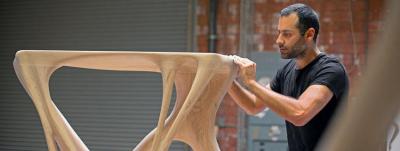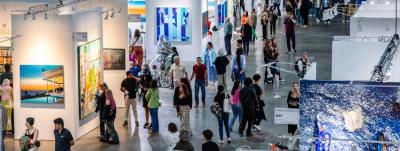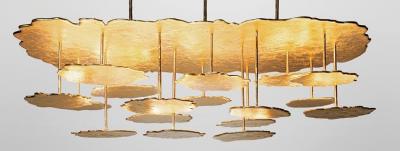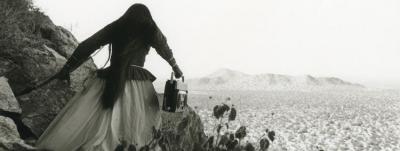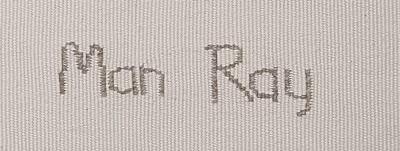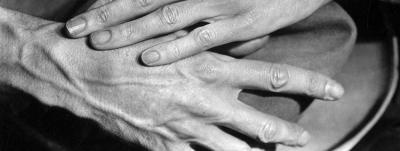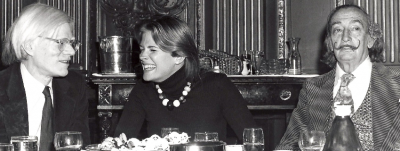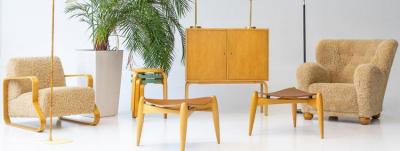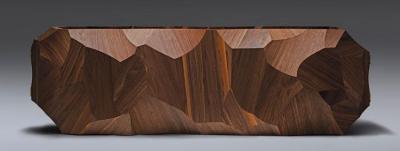Shima Shanti Paints Visions of Peace that Soothe the Soul
 |
Shima Shanti Paints Visions
of Peace Fused by Fire
by Benjamin Genocchio
 | |
Encaustic artist Shima Shanti |
Shima Shanti is an artist who paints with beeswax and fire — an ancient technique known as encaustic. Incollect sat down with Shima to discuss her work in this fascinating alchemical art form.
Tell us how you became an artist.
My life has followed a circuitous path, full of rich and varied experiences that have touched me in unexpected ways and also shaped me into the artist I am today: they began as a young adult in the rock-n-roll ‘70s, then a mother and wife of 45 years. Following the market crash of 2008 I left the corporate world and embarked on a spiritual journey that led me to write and publish philosophical works. While on a break in 2015 after my fifth book, Tears of Jupiter, the Cosmos and the Camino, I became an encaustic fine artist.
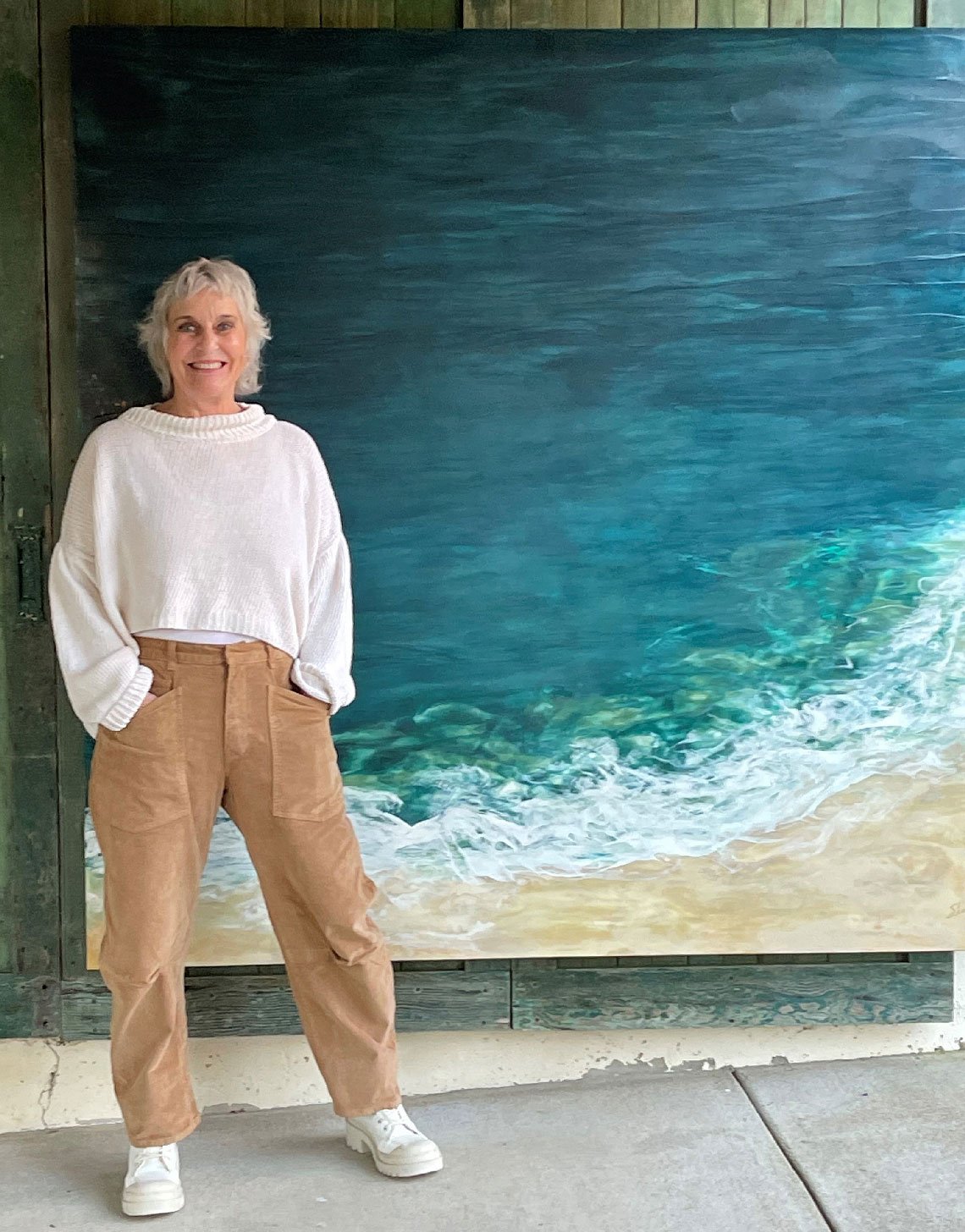 |  | |
Left: Living on the California coast, Shima takes inspiration from the meditative presence of the Pacific Ocean. Right: All-natural earth pigments are combined with beeswax, Damar resin and fire in the laborious and alchemical encaustic process, producing translucent and luminous effects. The artist notes, “Beeswax is one of nature's best preservatives. It is impervious to moisture, UV light and will not darken over time.” | ||
What led you to begin painting?
The quest for a literary agent and its elusive success prompted me to take a break and simply do something creative. Encaustic — an ancient art form of painting with pigmented beeswax that is then fused with fire — sounded interesting. I cobbled together a studio and began painting. With the confidence gained by acceptance into local juried art shows and a chance encounter with a wholesale distributor my small craft paintings became “giftable fine art” and I began selling nationwide through the wholesale market. Soon I was creating hundreds of little pieces, losing money on every transaction, and loving every minute! Thousands of hours and hundreds of artworks later I mastered the art form of encaustic.
“What Is What Really Is conveys an underlying organizing structure that holds all of nature and life in place, the structure that offers security, continuity, boundaries, and assuredness that all is in perfect order.”
 |  | |
| The unique beauty of encaustic art is the imperfection. There are bubbles, ripples and markings on the smooth textured high-gloss surface. Left: Unbeheld Schema 2, 2022. Encaustic on Baltic birch panel, 36 x 36 in. Right: What Is What Really Is, 2023. Encaustic on Baltic birch panel, 36 x 36 in. | ||
So what happened next? How did you make the leap into the art world?
I was at the crossroads of my totally unsustainable new passion, so I took a leap and submitted my artwork to a fine art exhibition. I was accepted and to my astonishment sold nearly the entire collection. More good fortune followed opening doors to the fine art world.
Is there a specific subject to your work?
I paint visions of peace revealing what lies beyond what appears to be and free of the confines of perception. My paintings don’t make a statement, rather they evoke an emotion. Art is my connection to Spirit; an open-eye meditation. The inspiration comes from growing up with an abundance of water and endless sky in Montana — which has forever connected me to nature and gifted me with an innate sense of color and composition.
Down Comes the Sky is an atmospheric cityscape, the forms suggestive of buildings viewed from a distance. From the artist’s Urban Peace series.
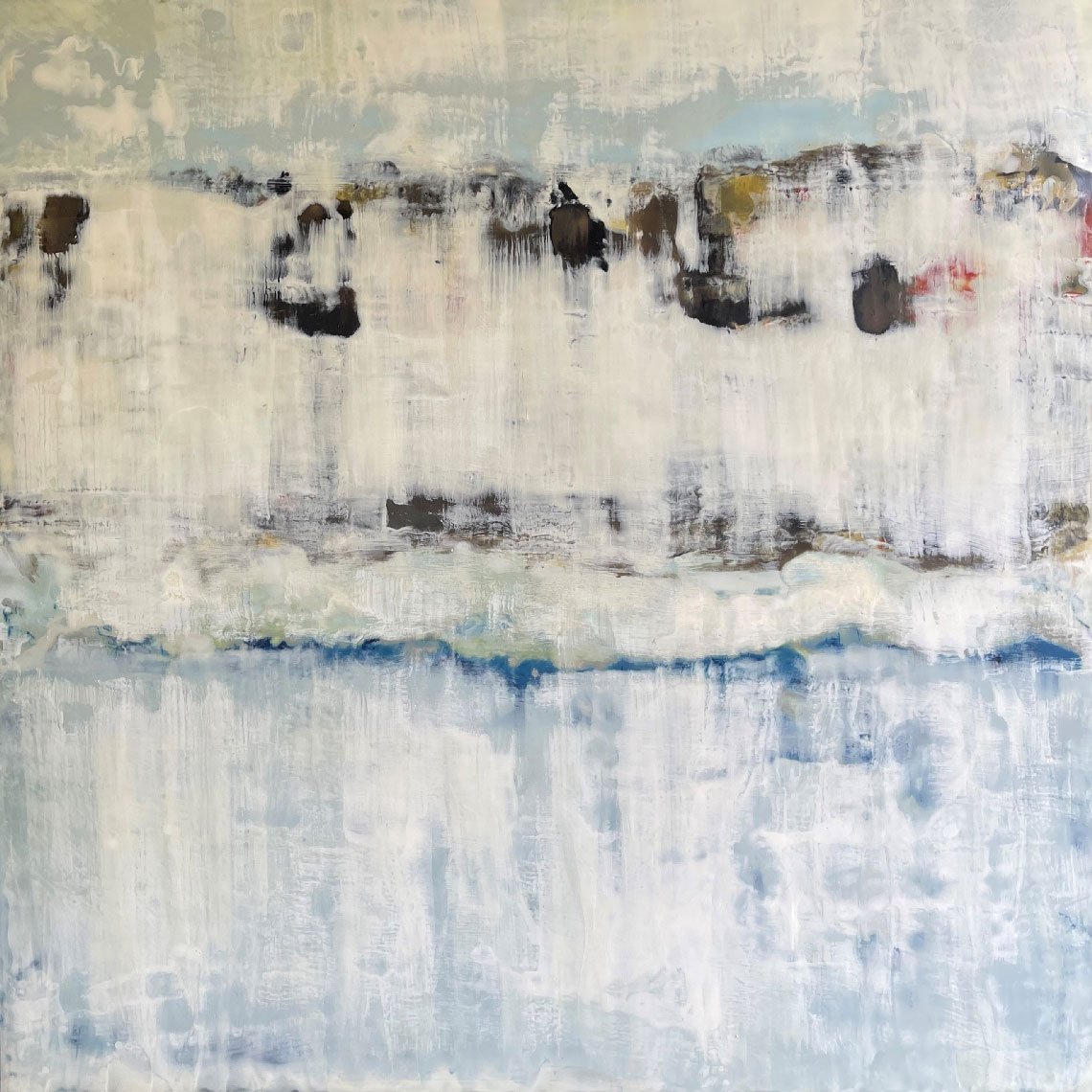 |  | |
| Left: Looking for Self Out There, 2023. Encaustic on Baltic birch panel, 36 x 36 in. Right: Down Comes the Sky, 2022. Encaustic on Baltic birch panel, 36 x 36 in. | ||
What made you choose encaustic, a difficult, labor-intensive medium?
I am asked that question a lot and often by well-known artists who have mastered oil and acrylic painting. They exclaim, “Why would you paint this way? It is one of the most difficult, expensive, and complex processes!” I did not realize that I was undertaking such a challenging medium. I was drawn to the all-organic elements, the historical significance of this ancient, alchemic medium, the ecology, and importance of bees in our environment, and the qualities of depth, dimension, translucency, and luminosity that painting with beeswax reveals in an artwork.
Could you explain the process of painting with encaustic?
Layers of purified molten beeswax combined with a small amount of a fir tree sap called Damar, mixed with all-natural earth pigments are painted on Russian Baltic birch panels. Each beeswax layer is fused to the layer beneath with the flame of a torch. I may paint as many as 50 layers of pigmented beeswax on the birch panel over the course of several weeks. Once I have painted and fused 15-20 layers I begin scraping back to the underlayers, adding and redacting until I see the beginnings of a composition with the desired effect of depth and dimension. Not always, but sometimes, the color palette will direct the painting and its compositional outcome will surface later in the process. The fusion of pigments with the flame of a torch creates secondary and tertiary colors in my work, imparting the harmony that viewers often perceive in them.
 | 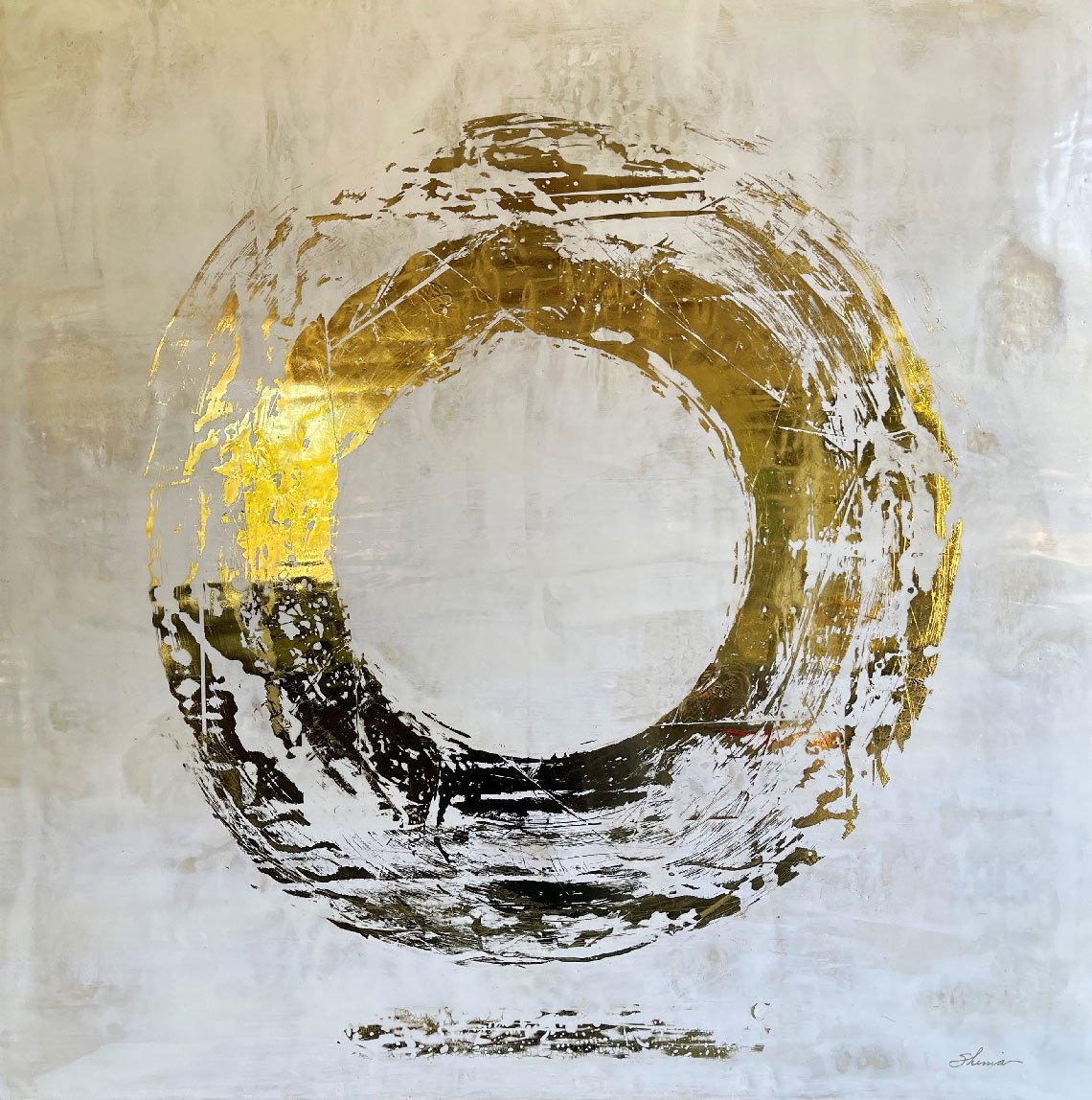 | |
Inspired by oneness and peace; Hikaru is the Japanese definition of radiance and light. From the Hikaru Collection: Left: Eternal Return 1, 2023. Beeswax and earth pigments with bookman's silver on Baltic birch panel, 36 x 36 in. Right: Eternal Return 2, 2023. Beeswax and earth pigments with bookman’s gold on Baltic birch panel, 36 x 36 in. | ||
How do you know when an artwork is completed?
I let the artwork tell me when it’s done. There comes a point when I am painting, usually 20-30 layers deep, when it is really good. Goosebumps good — don’t touch it good! But it’s still not done, and I know it. There is more to uncover. I’m torn; if I keep going with the next pass of the torch, the resulting mix of color can alter it in irreversible ways. And then it’s gone in an instant. I face a moment of paralysis and uncertainty at this point in the process. But I can’t stop; the painting won’t let me leave it half-dressed. After the painting is complete, I finish the edges with gilders’ wax to complement the painting. It is customary for encaustic artworks to be left unframed leaving the unique interest of the edges exposed. Finally, I sit with the painting listening for its message and poetically ascribe a title.
 | 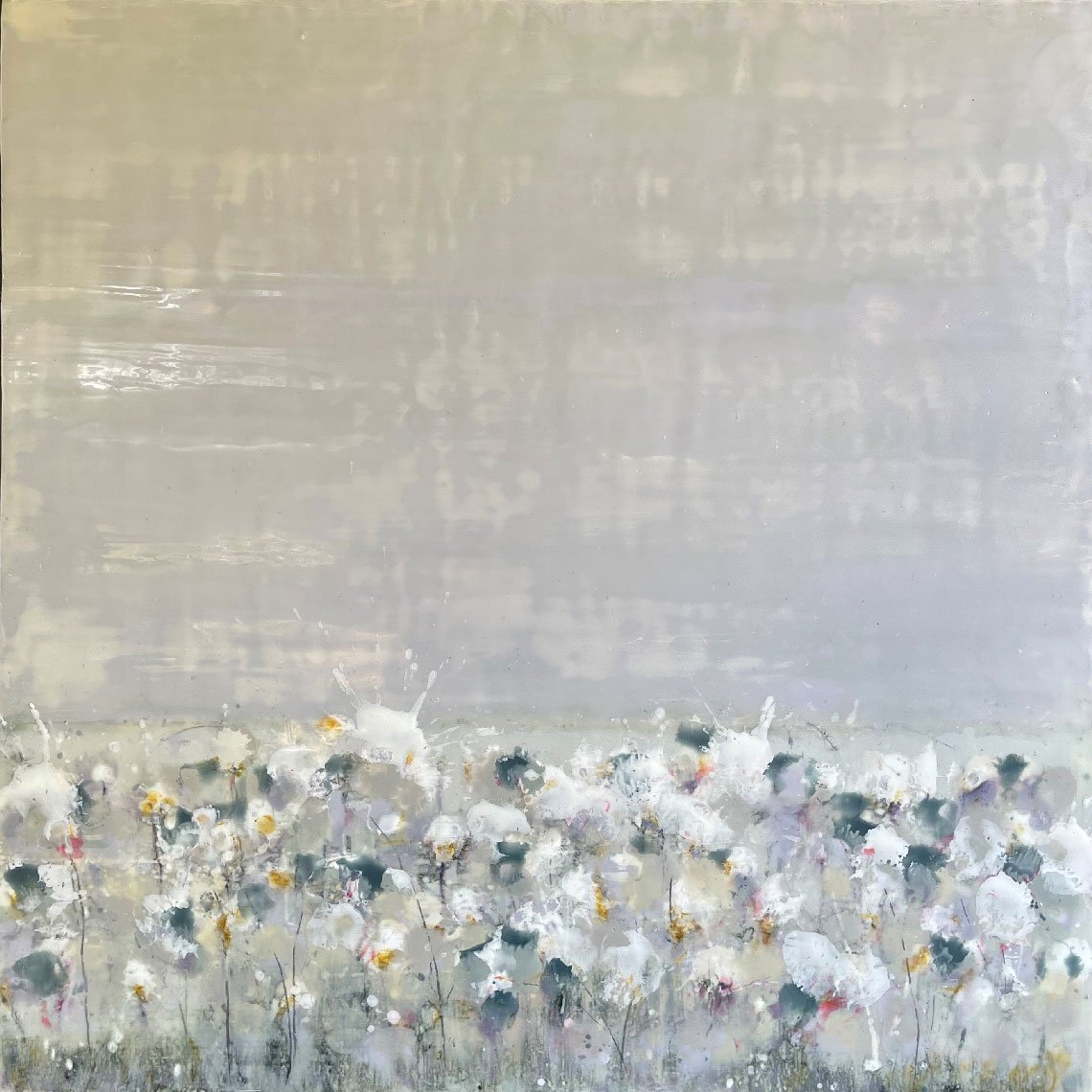 | |
Left: The Rising Sun, 2023. Encaustic on Baltic birch panel, 36 x 36 in. Right: Unified Field, 2023. Encaustic on Baltic birch panel, 36 x 36 in. | ||
You only use natural materials; why is that?
There is a patina, gloss, and texture of earth elements that cannot be replicated by synthetic products. The beauty of encaustic is imperfection. There will always be bubbles, ripples, and markings unique to nature that create artwork that is storied, dimensional, and translucent. Beeswax is one of nature’s best preservatives. It is impervious to moisture, and UV light, and will not yellow or darken with time, making my artwork durable, and archival.
What does a day look like in the studio for you?
I paint every morning beginning at 5:00 am; that pre-dawn time when the outside world has not fully awakened. I paint in silence without distraction; without intellectualization. That comes later in the morning, when the world has awakened, and I begin the mundane tasks that require thinking, organizing, planning, and manual labor.
“Guided by my heart, I paint with the natural elements of beeswax, pigments and fire; allowing me to infuse the mesmerizing beauty of nature into my art.”
You have written that you do not think about what you are painting, but rather “I allow the energy in each artwork to convey its own feeling.” Does that mean you never know what a painting will look like?
I will have an idea in mind of what I will paint, usually guided by my choice of color palette. The palette often guides the process of whether the painting will be of nature, water in motion, golden fields of grass, or mountain vistas. If I am moved to paint hard lines, the painting will go in the direction of an urban landscape. If my brush strokes are loose, it tends to be water in motion. Neutral colors and white open the door for abstract expression or atmosphere.
So they are representational?
I am an intuitive artist who paints impressions of nature. In all its many forms, nature spans the spectrum of representation and abstraction. My work reveals both. There is most often a horizon line in my work. It is this horizon line that is my representation and grounds me to begin a painting, or, if I get lost as to where a painting is going, I will draw a horizon line and I can begin to see a composition.
Jeu d'esprit from the Homage to Diebenkorn collection is inspired by the West Coast abstract expressionist, Richard Diebenkorn. Shima defines water in motion through the balance of vertical lines, angles, and planes of color conveying tension beneath the calm and a sense of peace.
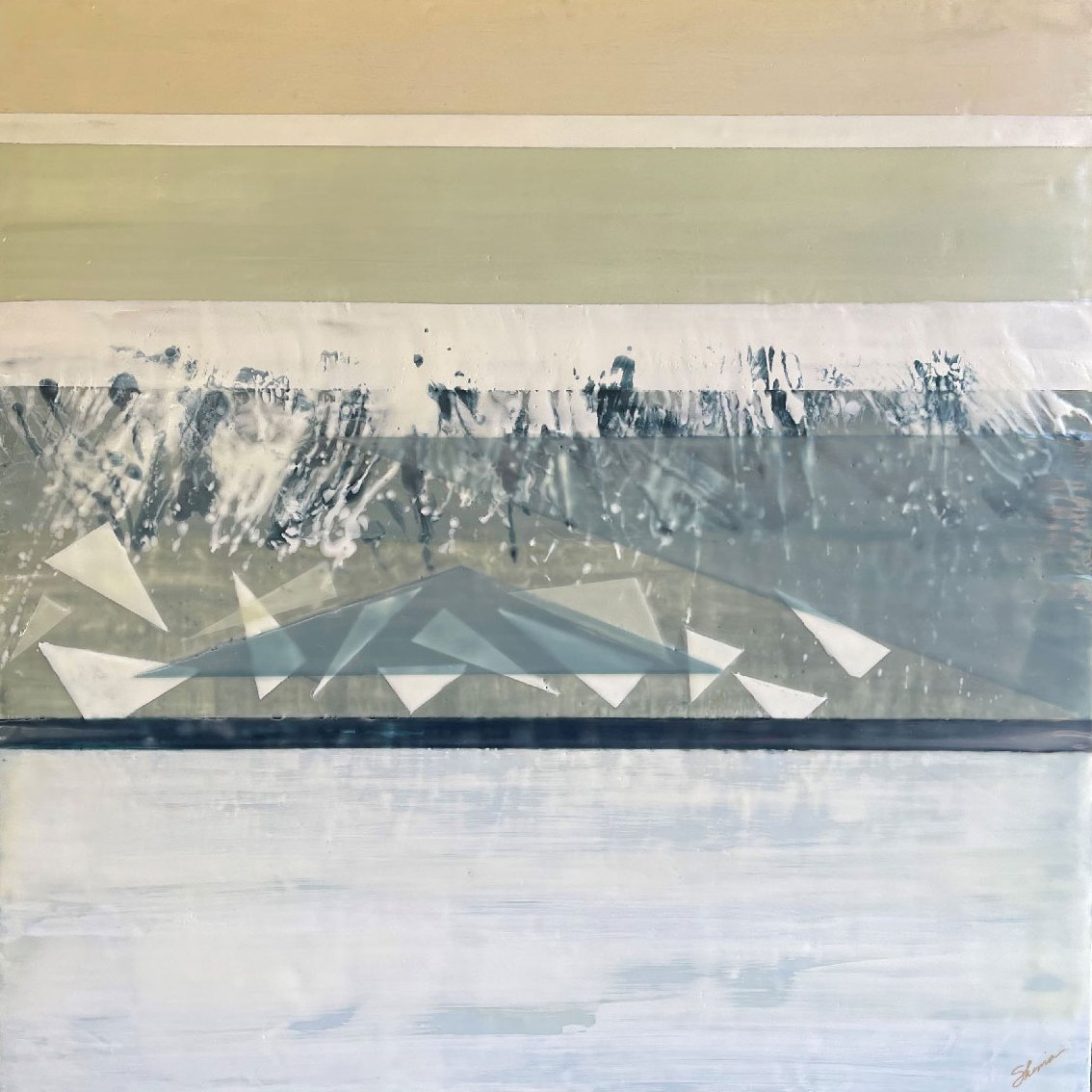 | 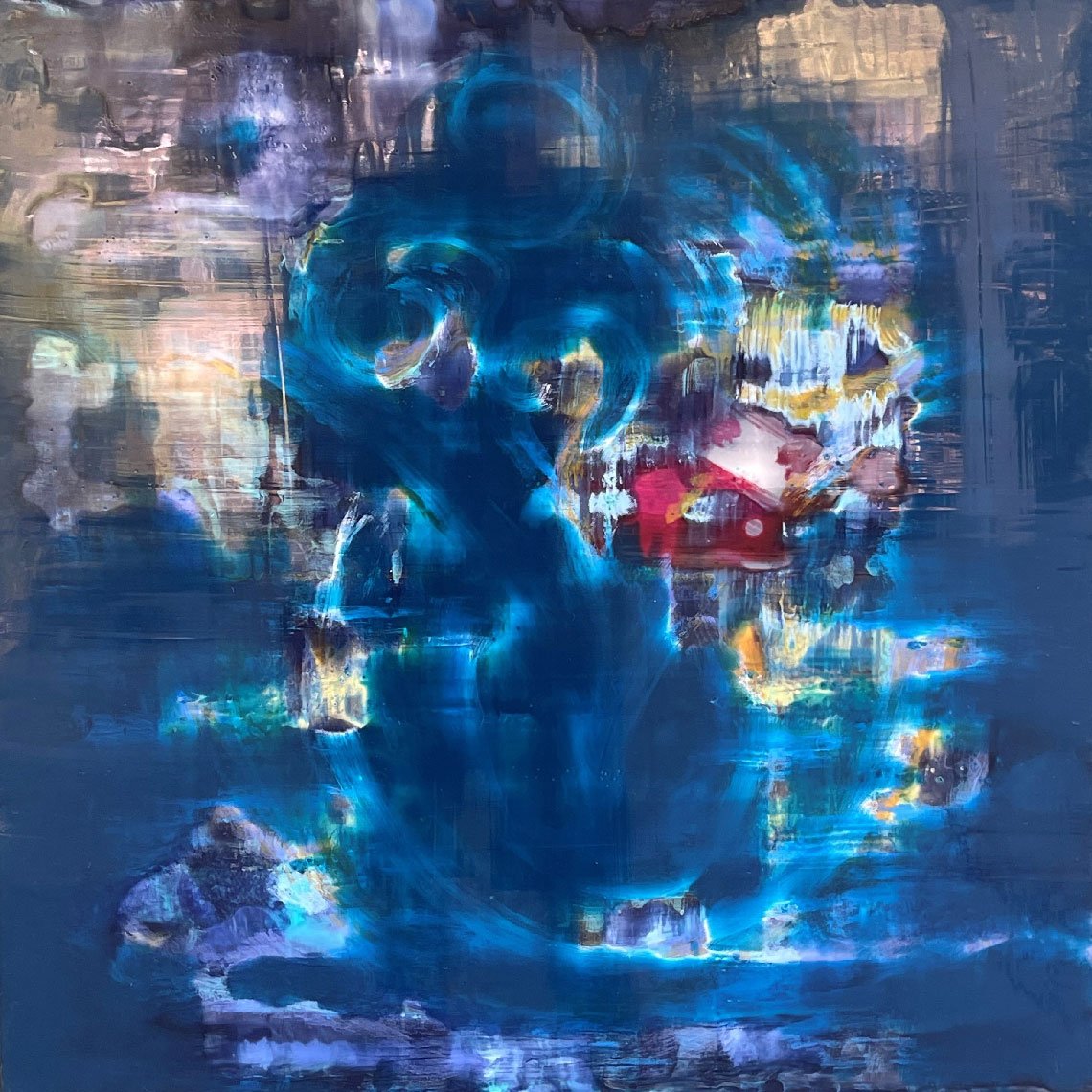 | |
| Left: Jeu d'esprit, 2022. Encaustic on Baltic birch panel, 36 x 36 in. Right: Allow, 2023. Encaustic on Baltic birch panel, 24 x 24 in. | ||
Is there a feeling, emotion, or mood you try to convey in your work?
I paint visions of peace. Those who view my artworks at exhibitions often comment on the visceral feeling of peace they experience in my salon space.
Do you work with interior designers and architects on projects?
I love working with interior designers, architects, and trade professionals. I'm excited to be creating six artworks for the Sherwin Williams 2025 Color of the Year Launch in San Diego County. I accept commissions from designers and individuals, where I bring the designer into a joint creative process with me. Together, we work out the details, composition, size, and color palette for the designer to present to their client.
 |















